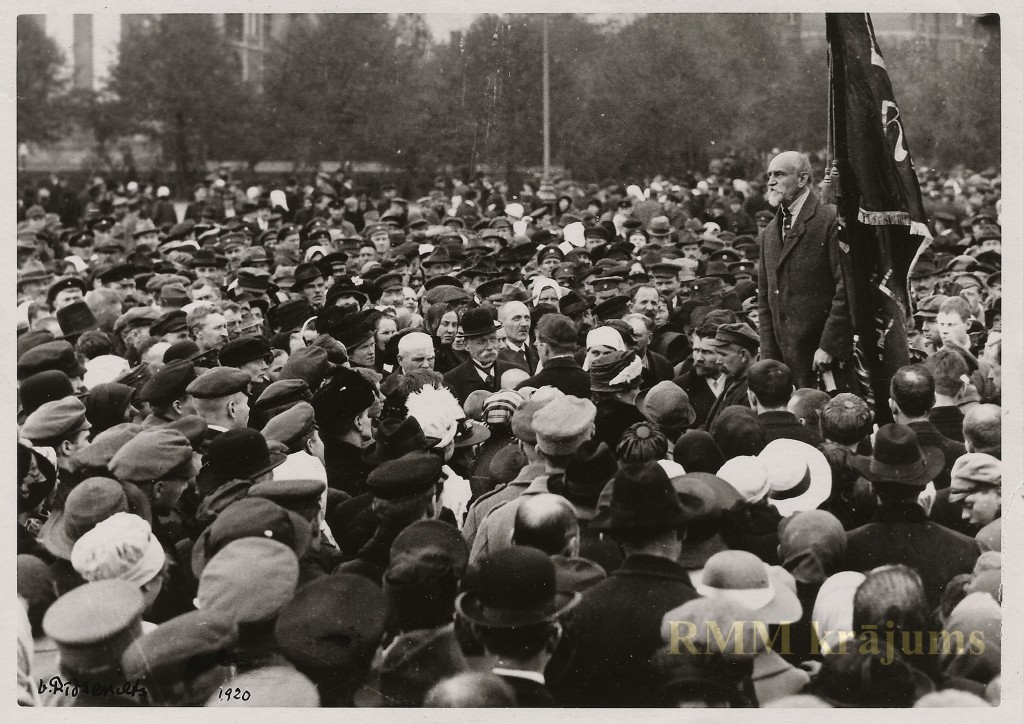“A poet – a troublemaker and a guesser of ‘world puzzles,'” says literary critic Gundega Grīnuma. Rainis. Poet, playwright, translator, head of the newspaper “Dienas Lapa”, co-founder of Daile Theater, director of the National Theater and Minister of Education. However, Rainis’ ambitions were even higher.
The ABC of culture
The ABC of LTV Kultūrdevas explains the significant history and significance of Latvian cultural facts.
–
–
In his diaries, Rainis writes that he wants to win the Nobel Prize, to become the leading spirit of world literature, the ruler of Europe and the president of Latvia. He had an unquenchable, almost insane desire to achieve more than anyone. Therefore, Rainis had a strict regime – he exercised regularly, tried to go to bed early and eat healthy. The strictly planned day was only regularly disrupted by guests who suddenly showed up to him – who to talk about literature, who to borrow a ruble.
A grandmother once came because she saw Raini appear in a dream, who told her to stop crying and come to visit better.
Rainis
Photo: Olive Metra
–
–
This is Rainis ‘most famous and controversial photograph – it reveals Rainis’ humanity, but at the same time diverts people’s minds from the main one – his great ideas. The author of the photo is the composer Olīvs Mētra, whom Rainis accidentally met on the beach in 1929. The two have had a joint photo shoot a few days later, as Rainis has complained that he has practically no pictures.
“I will force you to love Raini” is a play written by Gunārs Priede in 1973, the title of which is attributed to the legendary literary teacher Aina Britāne. Although she has only worked at Āgenskalns State Gymnasium, every second Latvian seems to have heard this phrase from her literature teachers.
In 1893, in the editorial office of “Dienas Lapas”, Rainis met a woman who did not have to teach to love Rainis – Aspazija. Hot feelings are immediately born between the editor of “Dienas Lapas” and the then well-known poet and playwright Aspazija. Aspazija is not only an outstanding writer, but also one of the first Latvian feminists, animal rights defenders (Aspazija was the honorary president of the Animal Protection Society and bequeathed a large sum of 3,000 lats to the animal shelter at that time), but also the first Latvian PR specialist.
After all, it was she who helped to grow and develop Rainis’ great personality, after whom 66 Latvian streets are named today.
(Only 11 Latvian streets are named after Aspazija.)
Rainis was also actively involved in political activities – he was imprisoned in Latvia for belonging to the New Current and later deported to Pskov and Slobodsk, actively participating in the 1905 revolution. During this time, a reward of 10 thousand rubles is promised for Rainis’ head, and both of them go into exile with Aspazija to Switzerland, using the accepted names – Arturs Nagliņš and Amālija Gerkīra. Both have lived in the village of Kastanola by Lake Lugano for 15 years. Rainis lists his most famous works here – plays “Golden Horse”, “Indulis and Ārija”, “Blow, winds!”, “Jāzeps and his brothers”, “Krauklītis”, “I play, dance”, collections of poems “Klusā grāmata”, “Those who do not forget”, “End and beginning” and others. Aspazija feels depressed and a lot sick in Switzerland, and lists two collections of poetry – “Sunny Corner” and “Flower Lap”.
Rainis and Aspazija have made a great contribution to the development of the Latvian language, and the words they create are used on a daily basis even by those whom the teacher has not forced Rain to love.
Thanks to him, the Latvian language has acquired such words as reflection, fervor, puff, grim, longing, passion, flow, sunset, splendor, cold, far, desire and others. Rainis also contributes greatly to his translated classics of world literature – William Shakespeare’s “King Lear”, Friedrich Schiller’s “Wilhelm Tell”, Henrik Ibsen’s “Feast in Solhaug”, of course Goethe’s “Faust” with Aspazija and many other works. The need for the formation of the Latvian state was voiced in Rainis ‘play “Fire and Night” written in 1904, but it took another 12 years for Rainis’ dream to become a reality.
Since the celebration of Rainis’ centenary on September 11, 1965, the festival “Poetry Days” has been taking place in Latvia during this time. In 2020, for the first time, a unique event was organized for “Poetry Days” – “Rainis Cepiens”, that is, a set of several witty floor performances dedicated to one person, this time Rainis. In 2015, the Year of Rainis and Aspazija was celebrated with ambition, with more than 60 events dedicated to both taking place throughout Latvia. Rainis and Aspazija each have four museums – Rainis and Aspazija’s house in Riga, Rainis and Aspazija’s summer house in Majori, Rainis ‘museum “Jasmuiza”, Rainis’ museum “Tadenava”, but another museum is located in Lugano, Switzerland. Rainis is the author of 6 collections of poetry, 1 poem, 13 plays, 1 prose book, 6 children’s poetry collections and 2 children’s plays. His articles have been published in 30 volumes.
–
Highlight text and press Ctrl+Enterto send the text to be edited!
Highlight text and press Report a bug buttons to send the text to be edited!
–
–


